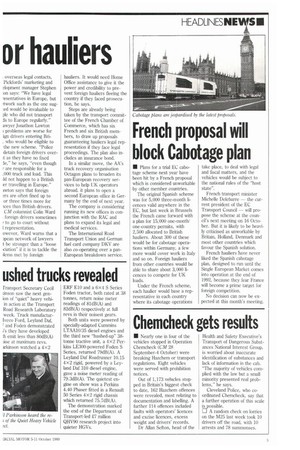Chemcheck gets results
Page 7

If you've noticed an error in this article please click here to report it so we can fix it.
• Nearly one in four ot the vehicles stopped in Operation Chemcheck (CM 28 September-4 October) were breaking Hazchem or transport regulations. Eight vehicles were served with prohibition notices.
Out of 1,173 vehicles stopped in Britain's biggest check to date, 162 Hazchem offences were revealed, most relating to documentation and labelling. A further 114 offences included faults with operators' licences and excise licences, excess weight and drivers' records.
Dr Allan Sefton, head of the
Health and Safety Executive's Transport of Dangerous Substances National Interest Group, is worried about inaccurate identification of substances and lack of information in the cab. "The majority of vehicles complied with the law but a small minority presented real problems," he says.
Cleveland Police, who coordinated Chemcheck, say that a further operation of this scale ispossible.
A random check on lorries on the M25 last week took 10 drivers off the road, with 10 arrests and 78 summonses.










































































































































































